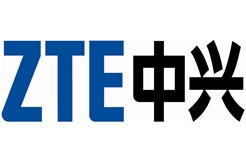ZTE India: Diversifying operations to ensure future growth

Once the fastest growing telecom equipment vendor, ZTE India is currently facing a tough time in the telecom market. Issues such as a slowdown in network roll-outs, government scrutiny and licence cancellation of some of its clients have resulted in reduced sales for the vendor, which has affected its operations. This is evident from its financial performance in 2012-13, when ZTE recorded revenues of $700 million as against $1.5 billion in 2009-10. The poor operational performance has led to the departure of three senior executives while employee salaries have been proposed to be reduced by up to 20 per cent. The sluggish demand for network equipment is the company’s biggest concern.
The reduction in equipment sales can be largely attributed to limited operator spending in the past two years. The profitability of ZTE’s customers such as Reliance Communications (RCOM) and Tata Teleservices Limited has been on a steady decline and these companies have a significant debt burden. This has constrained the operators’ ability to expand their networks. The demand has also dropped due to the discontinuation of services by clients including S Tel and Loop Telecom following the cancellation of 2G licences in February 2012.
In addition, the subdued demand for ZTE’s equipment can be attributed to security concerns raised by the Indian government due to the company’s alleged connections with Chinese intelligence agencies. The vendor has been asked to share software codes used in its products with the government. Meanwhile, the Centre for Development of Telematics, a state-owned research and development organisation, has asked the Department of Telecommunications to prohibit ZTE from participating in the Rs 200 billion National Optical Fibre Network project.
The company’s loss has been a gain for other vendor companies. New entrants including Uninor (now Telewings Communications) and Videocon Telecommunications have selected European vendors for setting up their telecom networks. Further, RCOM has awarded a $1 billion contract to Alcatel-Lucent for the expansion of its GSM network.
However, in 2012, ZTE won two key contracts from Bharti Airtel and Bharat Sanchar Nigam Limited (BSNL). It rolled out the country’s first long term evolution (LTE) network for Bharti Airtel in the Kolkata circle. BSNL awarded a contract to ZTE for supplying equipment for 10.5 million GSM lines in northern and southern India. ZTE also won the order for supplying network equipment for BSNL’s 4.2 million GSM lines in the eastern and north-eastern regions as none of the other vendors was able to match its bid of $58 per line. Although there have been concerns pertaining to the award of the contract to ZTE, especially for the north-eastern region, successful execution of this project will go a long way in improving the vendor’s credibility in the Indian telecom space.
In order to revive operations and increase profitability in the Indian market, ZTE has initiated the restructuring of its business model. From being a stand-alone network equipment vendor, it is now focusing on becoming an end-to-end solutions provider. Moreover, the company plans to shift its focus to the smartphone and tablet market as well as the enterprise segment.
In the past, ZTE was providing its handsets to local mobile manufacturers. As part of its new business strategy, the vendor intends to sell smartphones and tablets in the market. Initially, these devices will be imported from China and the company would supply them from its Manesar facility in the future.
ZTE has earmarked an investment of about Rs 5 billion for maintaining inventory, distribution, marketing and after-sales services. It has partnered with Pune-based Calyx Telecommunications, which will manage the sales, distribution and marketing of smartphones and tablets across the country, while ZTE will provide after-sales services. Calyx would sell ZTE’s products in 60 cities across Maharashtra, Goa, Gujarat, Madhya Pradesh and Chhattisgarh. ZTE has already announced the launch of five smartphones priced between Rs 5,799 and Rs 14,999 in October 2013. In the next few years, the company is targeting 30 per cent of its revenues from the sale of smartphones and tablets.
The enterprise segment is a key focus area for ZTE. Like other equipment vendors, it is diversifying its product portfolio in order to ensure sustainable growth. The vendor is in talks with operators like RCOM, Vodafone India and Airtel to offer enterprise solutions. ZTE is also looking to offer innovative solutions such as smart grid systems and intelligent transportation.
Going forward, the company is optimistic about its growth in the Indian market. The vendor’s foray into the smartphone market is well timed as the country is witnessing an increasing demand for data services, and smartphones and tablets. The majority of data users are looking for entry-level and sub-Rs 10,000 smartphones, which matches ZTE’s price range. Meanwhile, operators are also expected to set up long term evolution networks, which will drive the demand for network equipment in the near term. In the enterprise segment, several companies are planning to outsource their networks due to the need for advanced communications systems and increased security threats. This presents a significant opportunity for vendors such as ZTE. Although the company has chalked out a strong turnaround strategy, its ability to meet the targets will determine its competitiveness in the Indian telecom market.
- Most Viewed
- Most Rated
- Most Shared
- Related Articles
- Brand Idea: Focus on 3G, rural areas and...
- Samsung Mobiles: Smartphone strategy for...
- BSNL: Exploring revival strategies
- Reliance Jio Infocomm: Set to change the...
- Reliance Infotel: Strongly placed to tap...
- Tulip Telecom: On a sticky financial wic...
- MTNL: Survival strategies
- Bharat Sanchar Nigam Limited: Attempts t...
- Aircel: Increasing its footprint
- Vodafone India: Growth despite regulator...






